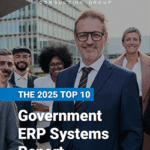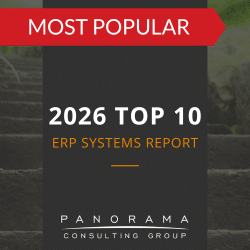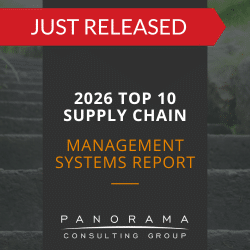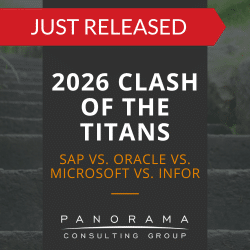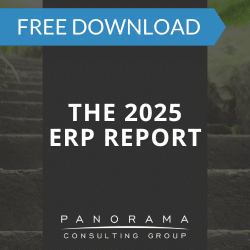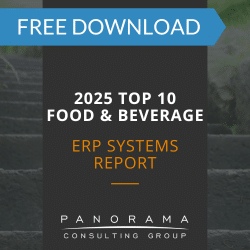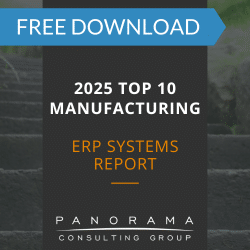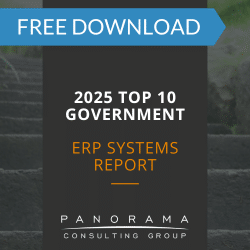- ERP success should be measured beyond go-live, focusing on long-term value realization.
- Common ERP KPIs include financial performance, operational efficiency, user adoption, and process improvement.
- Time to Value (TTV) is a critical yet often overlooked metric in evaluating ERP ROI.
- Independent ERP consultants enhance ROI by aligning systems with business needs and ensuring change readiness.
- Continuous post-implementation tracking and optimization are essential for maximizing ERP system ROI.
Enterprise resource planning (ERP) systems promise transformative benefits—from improved efficiency and better decision-making to streamlined processes across departments. Yet, organizations often focus on getting to go-live without clearly defining what happens after.
In reality, the true measure of success lies not just in a smooth implementation but in the long-term value generated by the system. That’s where understanding and maximizing ERP ROI becomes critical.
Let’s explore how mid to large-sized organizations can define, track, and realize value beyond go-live. We’ll outline practical methods for measuring ERP success, with a focus on key performance indicators (KPIs), strategic alignment, and the return on investment of engaging ERP consultants.
The 2025 ERP Report
72.6% of respondents said they've already deployed AI at their organizations. Learn about AI adoption and other ERP trends by downloading our latest report.
Why ROI in ERP Implementation Must Go Beyond Go-Live
Measuring ROI in ERP implementation involves more than tallying costs and comparing them to budget. A successful ERP implementation should deliver long-lasting operational, financial, and strategic benefits.
At Panorama Consulting, we often advise our clients to treat go-live as the start of a new phase—value realization. That’s when the system begins to generate measurable returns, assuming the organization is equipped to track and optimize those gains.
Defining ERP ROI: What Should Be Measured?
ERP ROI is typically calculated by comparing the tangible and intangible benefits gained from the ERP system to the total costs associated with implementing and maintaining it. But the nuance lies in what you measure and how you interpret it. Here are five dimensions that should be part of any ERP ROI framework:
1. Financial Gains
Start with the basics: revenue growth, cost reduction, and profit margin improvements. These are often easiest to quantify and compare pre- and post-implementation. Look at gains such as:
- Reduced inventory carrying costs
- Lower IT infrastructure costs or legacy system maintenance costs
- Improved billing cycles or decreased Days Sales Outstanding (DSO)
2. Operational Efficiency
ERP systems should improve process speed and consistency across functions like procurement, customer service, and finance. Important ERP KPIs to track include:
- Order fulfillment cycle time
- Utilization rate of staff or resources
- Financial close cycle time
These improvements directly affect productivity and can be monetized to reflect ROI. While metrics vary by industry, the common thread is improved consistency and throughput across critical business functions.
Going Deeper: Strategic KPIs for Measuring ERP Success
In addition to financial and operational metrics, forward-thinking organizations evaluate the strategic value of their ERP investment. Here are four often-overlooked ERP KPI categories that contribute significantly to the ROI of ERP systems:
3. Employee Productivity & Adoption
- Time saved on manual or redundant tasks
- Increase in transactions processed per employee
- Decrease in errors or rework
- Usage metrics by module or user group
When our ERP consultants develop change management plans for clients, we help them identify barriers to change, develop a training strategy, outline a communication plan, and monitor results post-implementation. This proactive approach supports adoption and boosts productivity, key drivers of ERP ROI.
4. Business Process Improvement (BPI)
One of the most direct indicators of ERP effectiveness is whether business processes have actually improved.
- Are workflows more automated?
- Is decision-making based on real-time data?
- Have cross-functional teams reduced handoff delays?
We recommend establishing a process maturity baseline before implementation to compare gains objectively post-go-live.
When our consultants lead business process management initiatives, we map current-state and future-state workflows, prioritize pain points, and embed process KPIs into post-go-live dashboards. This enables organizations to track tangible process improvements that drive ERP value.
5. Customer Experience and Satisfaction
ERP systems indirectly (and sometimes directly) affect customers. Shorter delivery windows, fewer errors, and more personalized services can be significant competitive differentiators.
Customer-centric KPIs include:
- On-time delivery rates
- Order accuracy
- Response times from support teams
- Net Promoter Score (NPS)
6. Time to Value: A Crucial ROI Indicator
One critical metric that often gets overlooked in the rush to implement is Time to Value (TTV). This measures how long it takes after go-live for the ERP to start delivering noticeable benefits.
TTV can be influenced by:
- System complexity
- Data readiness at the time of implementation
- Training and change management effectiveness
- Integration with other business systems
A faster TTV correlates with higher ERP system ROI—especially in dynamic or competitive markets.
How ERP Consulting Drives Higher ROI
Engaging independent ERP consultants for ERP selection and implementation multiplies the overall ROI. Here’s how:
1. Impartial Software Selection
ERP consultants ensure that the chosen software fits the organization’s unique needs—not vendor agendas. Impartial selection prevents costly mismatches and enables scalability.
2. Organizational Readiness
Consultants assess your current culture, technology, and data maturity, ensuring the organization is ready for transformation. This reduces risks and accelerates benefits realization.
3. Post-Go-Live Support and Optimization
An independent consulting partner will offer post-go-live audits, process refinement workshops, and ongoing KPI tracking to ensure continuous improvement—not just a one-and-done deployment.
For example, a state government engaged Panorama Consulting after encountering significant issues during the testing phase of a human resource management system (HRMS) implementation. Panorama conducted a comprehensive assessment, revealing that the delivered software failed to meet several critical business requirements and lacked proper integration.
Based on these findings, the state terminated its contract with the initial vendor and selected a new system better aligned with its needs. Panorama then provided independent verification and validation services for the new implementation, auditing key project workstreams. This enabled the state to recover its ERP initiative, ensuring that the new system would deliver a positive ROI.
Measuring ERP Success Is an Ongoing Commitment
Measuring ERP success requires discipline, visibility, and a long-term view. The key is to define success criteria early, integrate KPIs into daily operations, and continually refine strategies based on data.
Here’s a simple framework organizations can follow post-implementation:
- Establish pre-implementation KPIs across finance, operations, and customer experience.
- Track short- and long-term KPIs at 30, 90, and 180 days post-go-live.
- Adjust strategies based on gaps or underperformance.
- Optimize processes, user adoption, and system configurations regularly.
Let Panorama Help You Maximize ERP ROI
ERP systems are long-term strategic investments. Measuring their success requires a multi-dimensional view of outcomes, from financial metrics to employee engagement and process transformation.
Not seeing the outcomes you want as you approach go-live? By engaging experienced consultants, you can extract significantly more value, reduce risk, and ensure your systems evolve with your needs.
At Panorama Consulting, we specialize in helping organizations achieve measurable business outcomes from ERP investments. Whether you’re selecting, implementing, or optimizing an ERP system, our independent experts can help you define success—and reach it.
Contact us to learn how to improve ERP ROI and accelerate your digital transformation.


